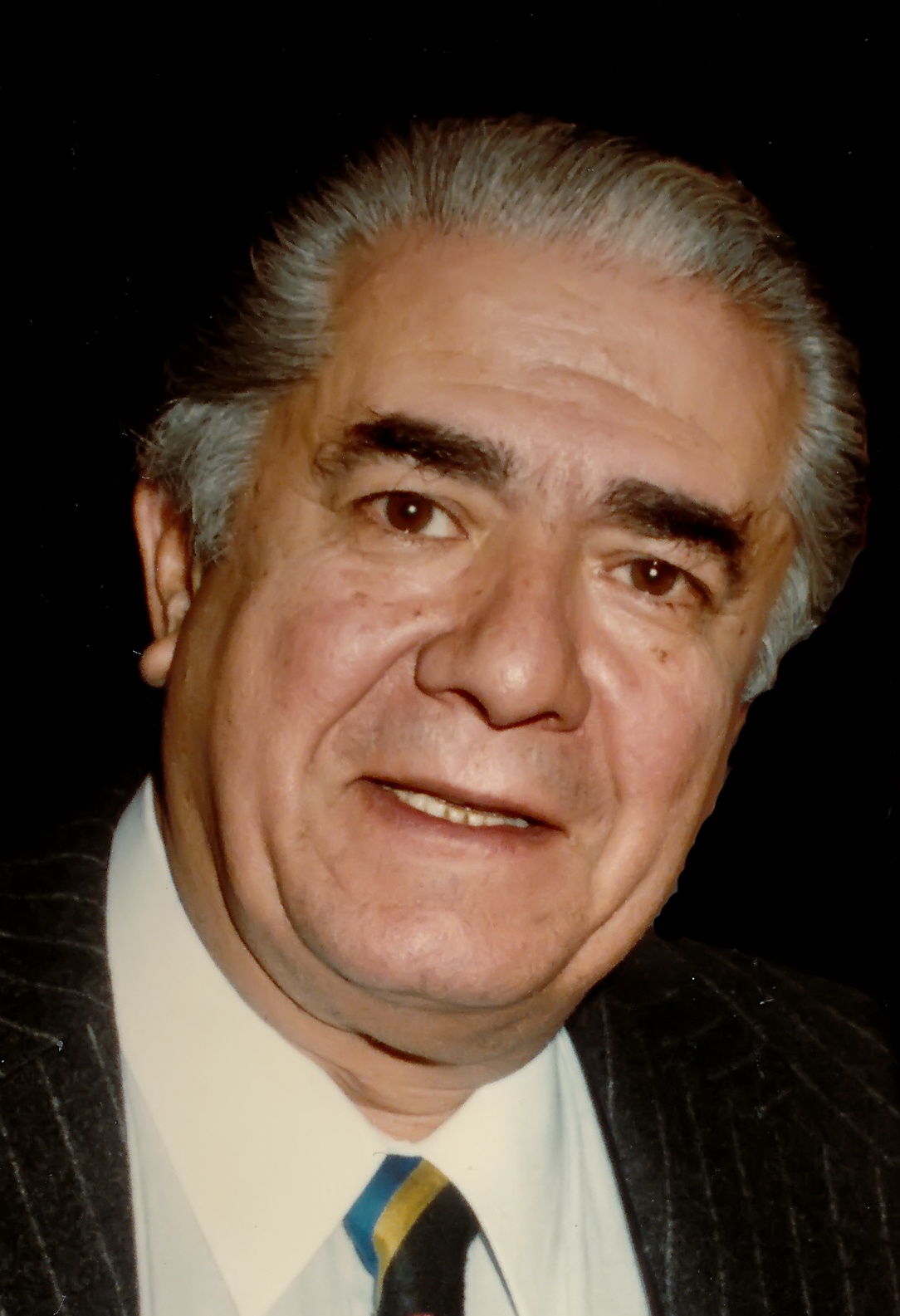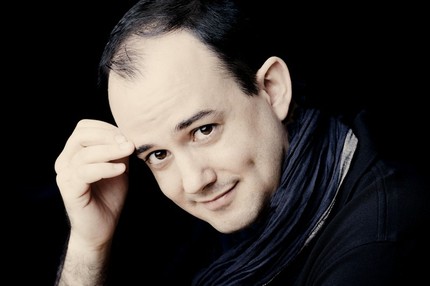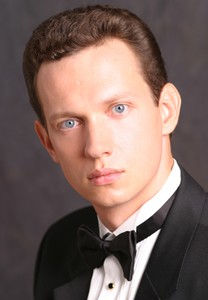
Giuseppe Di Stefano |
Giuseppe Di Stefano
Leoncavallo. “Pagliacs”. “Vesti la giubba” (Giuseppe Di Stefano)
Di Stefano belongs to a remarkable galaxy of singers who emerged in the post-war period and became the pride of Italian vocal art. V.V. Timokhin notes: “The images of Edgar (“Lucia di Lammermoor” by Donizetti), Arthur and Elvino (“The Puritani” and “La Sonnambula” by Bellini) created by Di Stefano earned him worldwide fame. Here the singer appears fully armed with his skill: his amazingly melodious, smooth legato, expressive sculptural phrasing and cantilena, full of passionate feeling, sung with a “dark”, unusually rich, thick, velvety sound.
Many historians of vocal art find Di Stefano the vocalist, for example in the role of Edgar, a worthy heir to the great tenor of the last century, Giovanni Battista Rubini, who created an unforgettable image of Lucia’s beloved in Donizetti’s opera.
One of the critics in a review of the recording of “Lucia” (with Callas and Di Stefano) directly wrote that, although the name of the best performer of the role of Edgar in the last century is now surrounded by legendary fame, it is somehow difficult to imagine that he could produce more for listeners impression than Di Stefano in this entry. One cannot but agree with the opinion of the reviewer: Edgar – Di Stefano is indeed one of the most remarkable pages of the vocal art of our days. Perhaps, if the artist left only this record, then even then his name would be among the largest singers of our time.
Giuseppe Di Stefano was born in Catania on July 24, 1921 in a military family. The boy was also originally going to become an officer, at that time there were no signs of his operatic career.
Only in Milan, where he studied at the seminary, did one of his comrades, a great lover of vocal art, insist that Giuseppe turn to experienced teachers for advice. On their recommendation, the young man, leaving the seminary, began to study vocals. Parents supported their son and even moved to Milan.
Di Stefano was studying with Luigi Montesanto when World War II began. He was drafted into the army, but he did not get to the front line. He was helped by one of the officers, who really liked the voice of the young soldier. And in the fall of 1943, when part of Di Stefano was to go to Germany, he fled to Switzerland. Here the singer gave his first concerts, the program of which included popular opera arias and Italian songs.
After the end of the war, returning to his homeland, he continued his studies at Montesanto. On April 1946, 1947, Giuseppe made his debut as de Grieux in Massenet’s opera Manon at the Municipal Theater of Reggio Emilia. At the end of the year, the artist performs in Switzerland, and in March XNUMX he performs for the first time on the stage of the legendary La Scala.
In the fall of 1947, Di Stefano was auditioned by the director of the New York Metropolitan Opera, Edward Johnson, who was vacationing in Italy. From the first phrases sung by the singer, the director realized that before him was a lyrical tenor, which had not been there for a long time. “He should sing at the Met, and certainly in the same season!” Johnson decided.
In February 1948, Di Stefano made his debut at the Metropolitan Opera as the Duke in Rigoletto and became the soloist of this theater. The art of the singer was noted not only by the audience, but also by music critics.
For five consecutive seasons, Di Stefano sang in New York, mainly lyric parts such as Nemorino (“Love Potion”), de Grieux (“Manon” Massenet), Alfreda (“La Traviata”), Wilhelm (“Mignon” Thomas), Rinuccio (“Gianni Schicchi” by Puccini).
The famous singer Toti Dal Monte recalled that she could not help crying when she listened to Di Stefano on the stage of La Scala in Mignon – the artist’s performance was so touching and spiritual.
As a soloist of the Metropolitan, the singer performed in the countries of Central and South America – with complete success. Only one fact: in the theater of Rio de Janeiro, for the first time in many years, the rule was violated, which prohibited encores during the performance.
Starting from the 1952/53 season, Di Stefano sings again at La Scala, where he brilliantly performs the parts of Rudolph and Enzo (La Gioconda by Ponchielli). In the 1954/55 season, he performed six central tenor parts, which at that time most fully reflected his capabilities and the nature of his repertory searches: Alvaro, Turiddu, Nemorino, Jose, Rudolf and Alfred.
“In operas by Verdi and verist composers,” writes V.V. Timokhin, – Di Stefano appears before the audience as a singer of bright temperament, vividly feeling and masterfully conveying all the ups and downs of the Verdi-Verist lyrical drama, captivating with a rich, massive, freely “floating” sound, a subtle variety of dynamic shades, powerful climaxes and “explosions” of emotions, richness timbre colors. The singer is famous for his remarkably expressive “sculpting” phrases, vocal lines in the operas of Verdi and verists, whether it is lava heated by the heat of passion or a light, sweet breath of the breeze. Even in such widely popular opera excerpts as, for example, “Scene at the Ship” (“Manon Lescaut” by Puccini), Calaf’s arias (“Turandot”), the final duet with Mimi from “La Boheme”, “Farewell to Mother” (“Country honor”), Cavaradossi’s arias from the first and third acts of “Tosca”, the artist achieves an amazing “primordial” freshness and excitement, openness of emotions.
Since the mid-50s, Di Stefano’s successful tours around the cities of Europe and the USA continued. In 1955, on the stage of the West Berlin City Opera, he participated in the production of Donizetti’s opera Lucia di Lammermoor. Since 1954, the singer has performed regularly for six years at the Chicago Lyric Theatre.
In the 1955/56 season, Di Stefano returned to the stage of the Metropolitan Opera, where he sang in Carmen, Rigoletto and Tosca. The singer often performs on the stage of the Rome Opera House.
In an effort to expand his creative range, the singer adds the role of a dramatic tenor to the lyrical parts. At the opening of the 1956/57 season at La Scala, Di Stefano sang Radamès in Aida, and the following season in Un ballo in maschera he sang the part of Richard.
And in the roles of the dramatic plan, the artist was a huge success with the audience. In the opera “Carmen” in the late 50s, Di Stefano expected a real triumph on the stage of the Vienna State Opera. One of the critics even wrote: it seems incredible to him how Carmen could reject such a fiery, gentle, ardent and touching Jose.
For more than a decade, Di Stefano sang regularly at the Vienna State Opera. For example, only in 1964 he sang here in seven operas: Un ballo in maschera, Carmen, Pagliacci, Madama Butterfly, Andre Chenier, La Traviata and Love Potion.
In January 1965, ten years later, Di Stefano sang again at the Metropolitan Opera. Having played the role of Hoffmann in Offenbach’s Tales of Hoffmann, he was no longer able to overcome the difficulties of this part.
A continuation followed in the same year at the Colon Theater in Buenos Aires. Di Stefano performed only in Tosca, and the performances of Un ballo in maschera had to be cancelled. And although, as critics wrote, in some episodes the singer’s voice sounded excellent, and his magical pianissimo in the duet of Mario and Tosca from the third act completely aroused the delight of the listeners, it became clear that the singer’s best years were behind him.
At the World Exhibition in Montreal “EXPO-67” a series of performances of “Land of Smiles” by Lehár with the participation of Di Stefano took place. The artist’s appeal to the operetta was successful. The singer easily and naturally coped with his part. In November 1967, in the same operetta, he performed on the stage of the Vienna Theater an der Wien. In May 1971, Di Stefano sang the part of Orpheus in Offenbach’s operetta Orpheus in Hell on the stage of the Rome Opera.
The artist nevertheless returned to the opera stage. In early 1970 he performed the part of Loris in Fedora at Barcelona’s Liceu and Rudolf in La bohème at the Munich National Theatre.
One of the last performances of Di Stefano took place in the 1970/71 season at La Scala. The famous tenor sang the part of Rudolf. The singer’s voice, according to critics, sounded fairly even throughout the entire range, soft and soulful, but sometimes he lost control of his voice and looked much tired in the last act.
He made his debut in 1946 (Reggio nel Emilia, part of De Grieux in Massenet’s Manon). Since 1947 at La Scala. In 1948-65 he sang at the Metropolitan Opera (debut as Duke). In 1950, at the Arena di Verona festival, he performed the part of Nadir in Bizet’s The Pearl Seekers. In 1954 he performed on the stage of the Grand Opera as Faust. He sang at the Edinburgh Festival (1957) the part of Nemorino (Donizetti’s Love Potion). In Covent Garden in 1961 Cavaradossi. Di Stefano’s frequent partner on stage and on recordings was Maria Callas. With her, he undertook a major concert tour in 1973. Di Stefano is an outstanding singer of the second half of the XNUMXth century. His extensive repertoire included the parts of Alfred, José, Canio, Calaf, Werther, Rudolf, Radames, Richard in Un ballo in maschera, Lensky and others. Among the singer’s recordings, a whole cycle of operas recorded at EMI together with Callas stands out: Bellini’s Puritani (Arthur), Lucia di Lammermoor (Edgar), Love Potion (Nemorino), La bohème (Rudolf), Tosca (Cavaradossi), “Troubadour” (Manrico) and others. He acted in films.
E. Tsodokov





